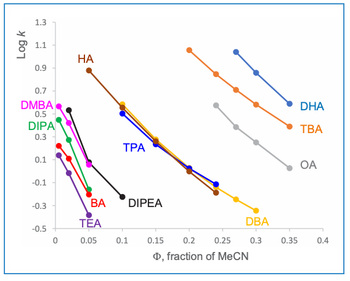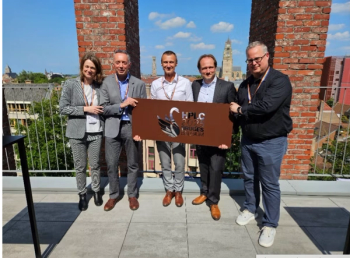Key Points
- Bisphenols (BPs) are synthetic antioxidants that can negatively affect human health upon exposure. BPs have been detected in various water sources.
- The scientists found high-performance liquid chromatography (HPLC) coupled with fluorescence detection (FLD) as being most suitable for detecting BPs in water.
- Loofah sponges were recently tested as solid-phase extraction (SPE) adsorbents to extract BPs from environmental water sources.
Wuhan University researchers developed a new loofah sponge-based approach for detecting bisphenols in environmental samples. Combining solid-phase extraction (SPE) with high-performance liquid chromatography-fluorescence detection (HPLC-FLD), the team sought to develop a highly sensitive and selective analytical method. Their research was published in the Journal of Chromatography A (1).
Bisphenols (BPs) are commonly used synthetic phenolic antioxidants that can slow the oxidative degradation of plastic products (2). These chemicals contain two hydroxyphenyl functional groups, including several analogs, and are widely used for manufacturing polycarbonate plastics and epoxy resin, which can be applied in medical devices, electronics, food containers, and more. Widespread application of BPs can lead to their presence in aquatic ecosystems and food chains. BPs have been reported to display cytotoxic, genotoxic, and neurotoxic effects. Human exposure to BPs can lead to various medical issues, such as potentially disrupting the endocrine system, increased blood pressure, and type 2 diabetes (3). There are various safety regulations of bisphenol permissible levels in the environment and food.
BPs have been widely detected in various water sources, and due to their low concentration and the complex nature of water matrices (such as microorganisms and organic matter), accurate BP determination requires highly sensitive and selective analytical techniques. Among the various detection methods, high-performance liquid chromatography (HPLC) coupled with fluorescence detection (FLD) was noted as being particularly suitable due to its high sensitivity and cost-effective nature.
In this study, loofah sponges were treated by alkaline solution and then used as solid-phase extraction (SPE) adsorbents to extract BPs from environmental water samples. Made of naturally derived materials, loofah sponges act as vehicles for transmitting different substances to human skin (4). These sponges contain abundant hydroxyl, carboxyl, amino, and other active groups which easily interact with various substances, exhibiting stable three-dimensional porous structures; according to the researchers, these properties make loofah sponges ideal SPE adsorbents. Loofah sponges have been used for SPE of trans-resveratrol (TRA) from edible oils through hydrogen bond interactions, and loofah sponges have been reported to potentially enable selective BP extraction from water samples by forming hydrogen bonds between abundant active groups (especially hydroxyl groups) and BPs.
Key extraction conditions were optimized during this process, including adsorbent amount, washing solvent volume, sample pH, ionic strength, sample loading flow rate, eluent type, and elution solvent volume. Under optimal extraction conditions (200 mg adsorbent amount and 5.0 mL eluent volume), the HPLC-FLD method was used. The method displayed excellent linearity within a BP concentration range of 0.5–500 ng/mL and low detection limits (0.077–0.225 ng/mL).
The recoveries of five bisphenols ranged from 78.6–112%, with inter-day and inter-day precision less than 5.1%. The method was successfully applied to bisphenol analysis in water from various sources, including river, lake, tap water, bottled water, and barreled water. Overall, the proposed method proved low-cost, efficient, and sensitive, offering researchers an alternative strategy for monitoring bisphenols in environmental water.
References
(1) Hou, W.; Zhu, Y-Q.; Yang, Y-J,; Yu, Q-W. Loofah Sponge-Based Solid-Phase Extraction in Combination with High-Performance Liquid Chromatography-Fluorescence Detection (HPLC-FLD) for Analysis of Bisphenols in Environmental Water. J. Chromatogr. A 2025, 1756, 466055. DOI: 10.1016/j.chroma.2025.466055
(2) Bisphenol. ScienceDirect 2023. https://www.sciencedirect.com/topics/chemistry/bisphenol (accessed 2025-6-25)
(3) Healthy Lifestyle: Nutrition and Healthy Eating. Mayo Clinic 2023. https://www.mayoclinic.org/healthy-lifestyle/nutrition-and-healthy-eating/expert-answers/bpa/faq-20058331 (accessed 2025-6-25)
(4) Bottone, E. J.; Perez 2nd, A. A.; Oeser, J. L. Loofah Sponges as Reservoirs and Vehicles in the Transmission of Potentially Pathogenic Bacterial Species to Human Skin. J. Clin. Microbiol. 1994, 32 (2), 469–472. DOI: 10.1128/jcm.32.2.469-472.1994





